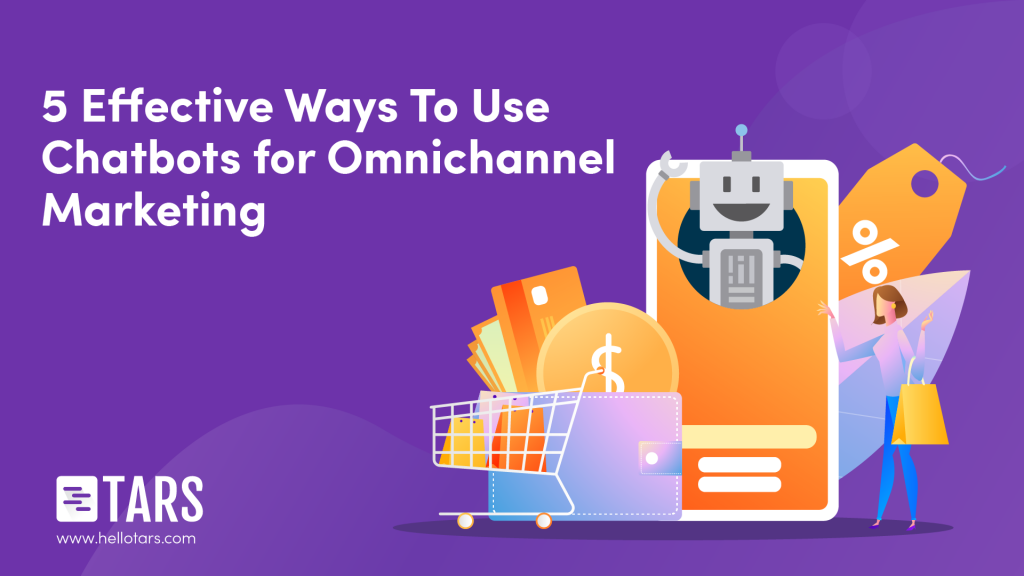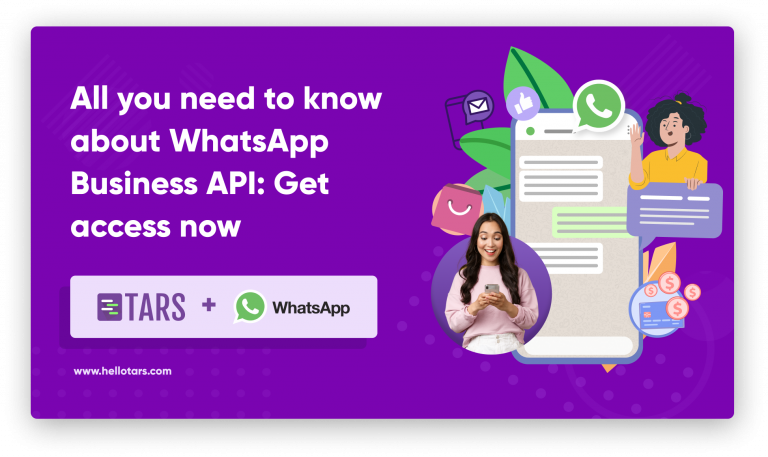5 Chatbot Tips for Your Omnichannel Marketing Strategy

For the uninitiated, omnichannel marketing involves creating a holistic brand strategy across different channels.
This means that when customers bounce around between your landing page, website, mobile app and even physical store, they should have a coherent buyer experience.
In this article, we will explore how chatbots can be effectively integrated into an omnichannel marketing strategy to boost user engagement and drive more business📈
1. Reduce Invasiveness Through Personalization
Automated messages are a common feature in omnichannel marketing, and with good reason. They are a great way to deliver valuable information (e.g. about coupons and promos) and they can direct customers to your other engagement channels (e.g. from your website to your newsletters, apps, and social media tools), thereby keeping people within your marketing ecosystem. If implemented incorrectly, however, automated messages can feel invasive, and that diminishes the quality of your UX.
To avoid this issue in your chatbots, you need to position them as a repository of easily accessible information that actually enhances the user experience. A good way of achieving this positioning is through personalization.
For example, if someone is navigating your site, you can personalize a message based on the page content. So if someone is checking out your shipping and returns policy (meaning a pretty high intent to purchase), you could have your chatbot prompt users with a message like “Got any returns questions I can help you answer?” and then build out a custom Shipping and Returns policy flow to handle common questions.
In doing so, your chatbot’s automated message is timely, context-appropriate and most importantly uninvasive.
2. Make Your Chatbot Speak Like Your Brand
Your chatbot is a part of your brand just like any other digital medium that you use. This means that the way that automated messages in your chatbot are crafted needs to reflect your brand identity.
A good way of doing this is to think about how your ideal customer talks and incorporating a matching tone in your chatbot.
For example, if your brand voice is younger and more casual, your chatbot shouldn’t say “Hello Dear Customer. How may I help you today?” because that sounds a bit too formal and there will be dissonance between how your chatbot interacts with your customer and your overall brand look and feel. Instead, you could opt for a more casual message like “Hey! Need any help?”
3. Use Your Chatbot As A Personal Reminder System
Chatbots can be used to send a friendly reminder to your customers. Easily personalized and much more “human” than other channels, Chatbot messages can be direct without feeling as pushy as other channels.
For example, say a customer has left an item in their cart and hasn’t been receptive to cart abandonment emails. The next time they visit your site, you can send a chatbot message that says “Hey [First name], you left [this product] behind on your last visit. We’ve moved it to your wishlist for you. There is X number of this product left in your size/color.”
This has more of a “customer support” feel to it rather than a sales tone. You’ve reminded the customer about their abandoned product while performing a service (moving it to the wishlist), and you’ve added a tone of urgency by telling the customer how many are left. This plays on FOMO, or the fear of missing out, and might incite your customer to finish their purchase.
With targeted messages, you can remind customers of uncompleted actions such as registration to promos and purchase of in-cart items. You can also use chatbots to collect information such as feedback on your new website or app features.
4. Keep Your Chatbot Well-Informed
When customers know more about the products and services that they are buying from you they are more likely to follow through and convert.
This means that for your chatbot to be an effective marketing tool it needs to deliver valuable buying information quickly and easily. To ensure this, include a wide variety of information sources in your chatbot flow such as promos, price range, and store locations
5. Collect data to improve your system.
Improving responses through customer data is as important as using A/B testing for omnichannel marketing. You can expect to have some issues when initially using chatbots to improve customer experience. The best way to deal with these issues is to monitor customer behavior and respond accordingly.
It’s always important to adapt your services to meet customer demands. This can be achieved with the help of collected data from customers. You can expect to do some major changes from time to time as the needs of your customers evolve throughout the process.
Conclusion
Mastering omnichannel marketing requires you to focus on improving the overall customer experience. Chatbots are a tool that can help you achieve this because they can engage customers in a way that feels more human than traditional online mediums.
Of course, seeing this value in practice is wholly contingent on your implementation.
While chatbots have the potential to improve user engagement, they can also be seen as intrusive, if implemented incorrectly. To avoid this you need to pay close attention to how your chatbot is influencing the customer’s user experience.
By ensuring that your chatbot delivers personalized and useful information in a friendly manner, you can effectively launch a chatbot that enhances your omnichannel marketing capabilities.
Evaldas Mockus is an Experienced SEO with a demonstrated history of working in SaaS companies. Currently, he is associated with Omnisend, an marketing automation platform built for growing e-commerce businesses.
- 1. Reduce Invasiveness Through Personalization
- 2. Make Your Chatbot Speak Like Your Brand
- 3. Use Your Chatbot As A Personal Reminder System
- 4. Keep Your Chatbot Well-Informed
- 5. Collect data to improve your system.
- Conclusion


Build innovative AI Agents that deliver results
Get started for freeRecommended Reading: Check Out Our Favorite Blog Posts!

Why CSMs Are Vital For Chatbot Marketing

Making Your SEO Count

All You Need To Know About WhatsApp Business API: Get Access Now

Our journey in a few numbers
With Tars you can build Conversational AI Agents that truly understand your needs and create intelligent conversations.
years in the conversational AI space
global brands have worked with us
customer conversations automated
countries with deployed AI Agents